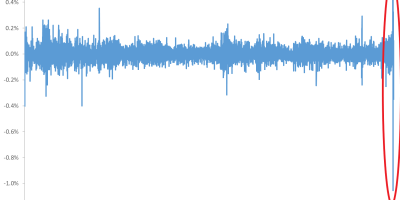Today, October 1, the Council for Return Expectations publishes its updated expectations. We expect very low – negative – returns on safe assets over the next five and ten years. We expect an equity premium around 5-7 percent.
I chair the Council for Return Expectations (link). Twice a year, we update our expectations. Today, we publish our latest forecasts.
In a June post (link), I described the history of the council, how we operate, who we are, why we publish expected returns, what they are used for, and so on. Briefly, here, the Council consists of Torben M. Andersen (professor of economics, University of Aarhus; link), Peter Engberg Jensen (former CEO of Nykredit and current chairman of Financial Stabilitet; link ), and myself as Chairman. Based on inputs from Blackrock, J.P. Morgan, Mercer, and State Street (thanks!), we estimate expected returns, risks (standard deviations), and correlations between returns on ten different asset classes over the next five and ten years. We also publish expected returns on two assets classes (stocks and bonds) for investment horizons exceeding ten years.
The forecasts are important in Denmark. When Danish pension funds project how the retirement savings of their customers will most likely develop (with confidence bands), they base their projections on the Council’s return expectations. Similarly, when banks advice Danish investors on their non-retirement savings, they use the expected returns provided by the Council. I think it is fair to say that Denmark has been a front-runner in designing a system where banks and pension funds do not compete on expected returns, but all use a common set of return assumptions, determined by an independent Council.
The forecasts published today will be used for pension projections and projections for savings outside retirement accounts as of January 1, 2021. In spring 2021, we will publish updated expectations that will be used from July 1, 2021, and the following six months. And so on.
The timing is as follows. The expectations we publish today are based on market data from July 1, 2020. We use the period from July 1 until today (October 1) to determine our expectations. The expectations we publish today are then used by banks and pension companies as of January 1, 2021.
The numbers
We publish forecasts for expected returns on ten asset classes over the next five years, years 6-10, and over the next ten years. Returns are average annual returns in Euros/Danish kroner (the Danish kroner is fixed to the euro). These are our expectations:

We expect an investment in safe assets (defined as a five-year duration portfolio of 30% Eurozone government bonds (minimum Triple-B), 20% Danish government bonds, and 50% Danish mortgage bonds – Danish mortgage bonds are triple-A rated, by the way) to lose money every year on average over the next ten years. This is noteworthy. On average, we expect such an investment to lose 0.1% per year over the next ten years. Over the next five years, we expect it to lose 1.2% per annum. The reason why we expect such low returns is that the underlying bond portfolio has a duration of five years, as mentioned, and we expect a normalization of interest rates, causing capital losses which drag down expected returns.
We expect lower returns from bond investments than we did in our June update (link). In June, we expected government and mortgage bonds to return a negative 0.3% per year over the next five years and a positive 0.3% per year over the next ten years. The reason why we expect lower returns now (-1.2% and -0.1% for the five and ten year periods, respectively) is that our forecasts today, as mentioned, are based on market data from July 1. On July 1, interest rates and credit spreads were lower than those used at our previous update. Our previous update was based on March 31 market data. In March, the corona virus had caused a hike in yields and a widening of credit spreads. Since then, yields and spreads have come down.
Global equities are expected to yield around 6% per year. This means that the equity premium is expected to be 5%-7%, depending on the investment horizon.
We expect low inflation. We expect Danish inflation to be 1.2% per annum over the next five years and 1.5% over the next ten years.
For investment horizons above ten years, we expect equities to return 6.5% per annum and bonds 3.5%. This is the same as we expected last year (we update long-run expectations once a year). Over the coming year, we will make a thorough evaluation of these long-run expectations.
We also publish standard deviations for all asset classes and for all horizons, as well as correlations and fees. Standard deviations are high for high-return assets; nothing comes for free. We thus publish many numbers. You can find all these numbers on the webpage of the Council: link.
Conclusion
We (The Council for Return Expectations) expect that Danish investors will lose money – even before fees and inflation – if investing in safe assets over the next ten years. You can expect positive returns on other asset classes, but then you need to take on risks.
Historically, the risk-free real interest rate has been around 2% per annum and the nominal interest rate around 4%. Investors would see their savings grow, even without taking on risk. This is not what investors should expect going forward. The fact that you cannot expect your portfolio to grow without taking on risk tells us a lot about the low-return world we are living in.
